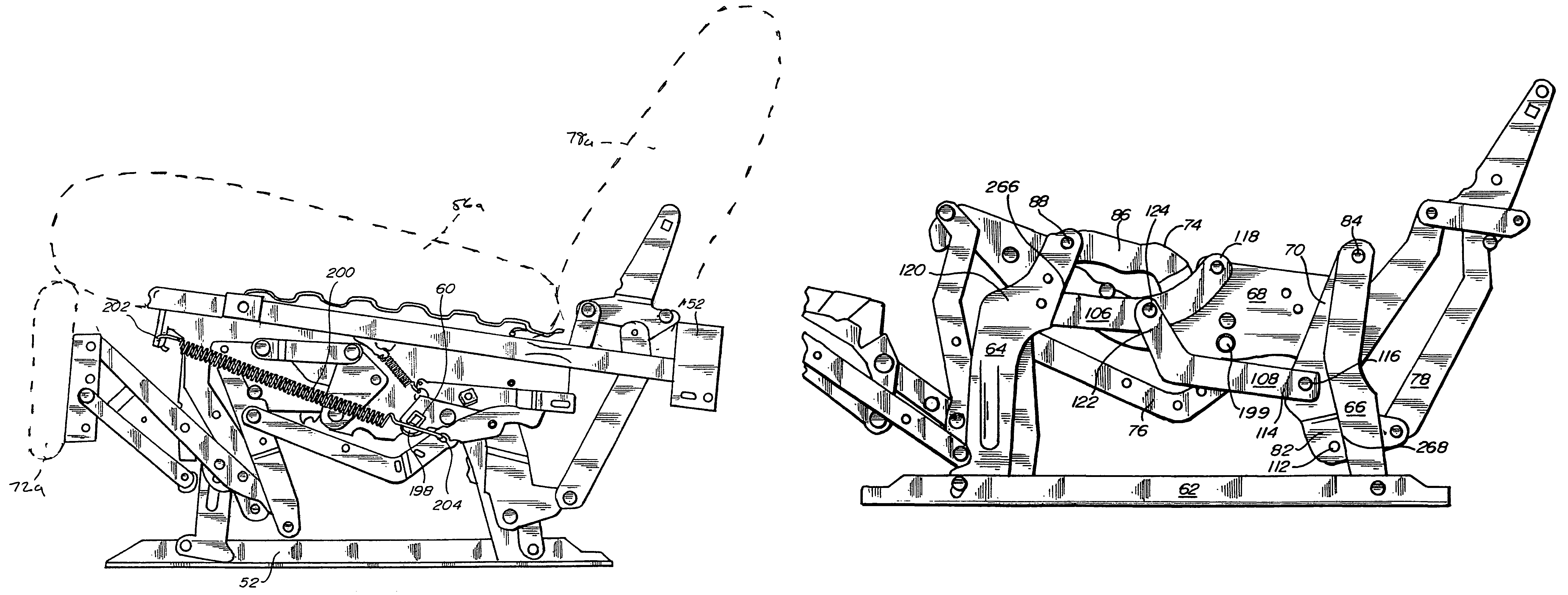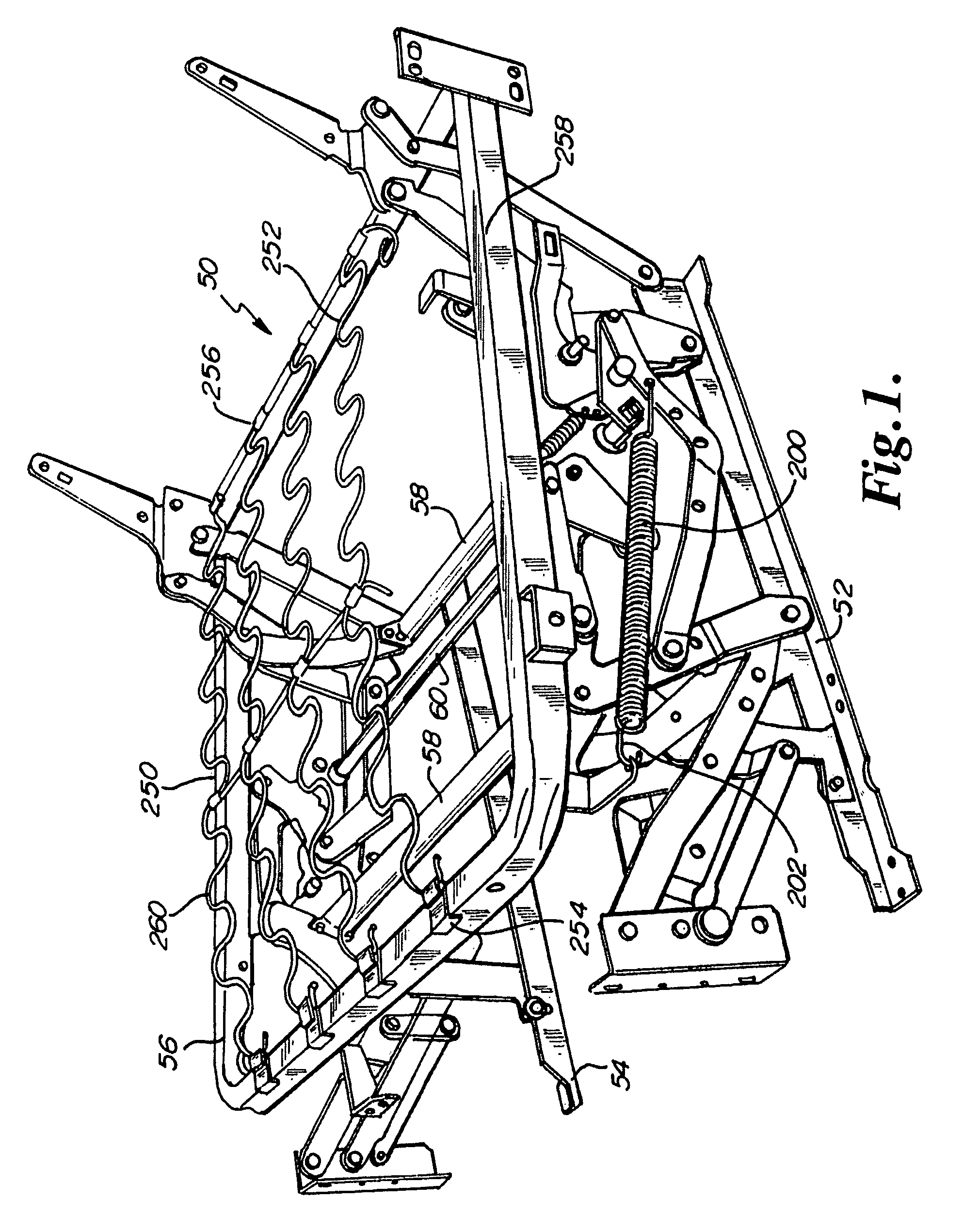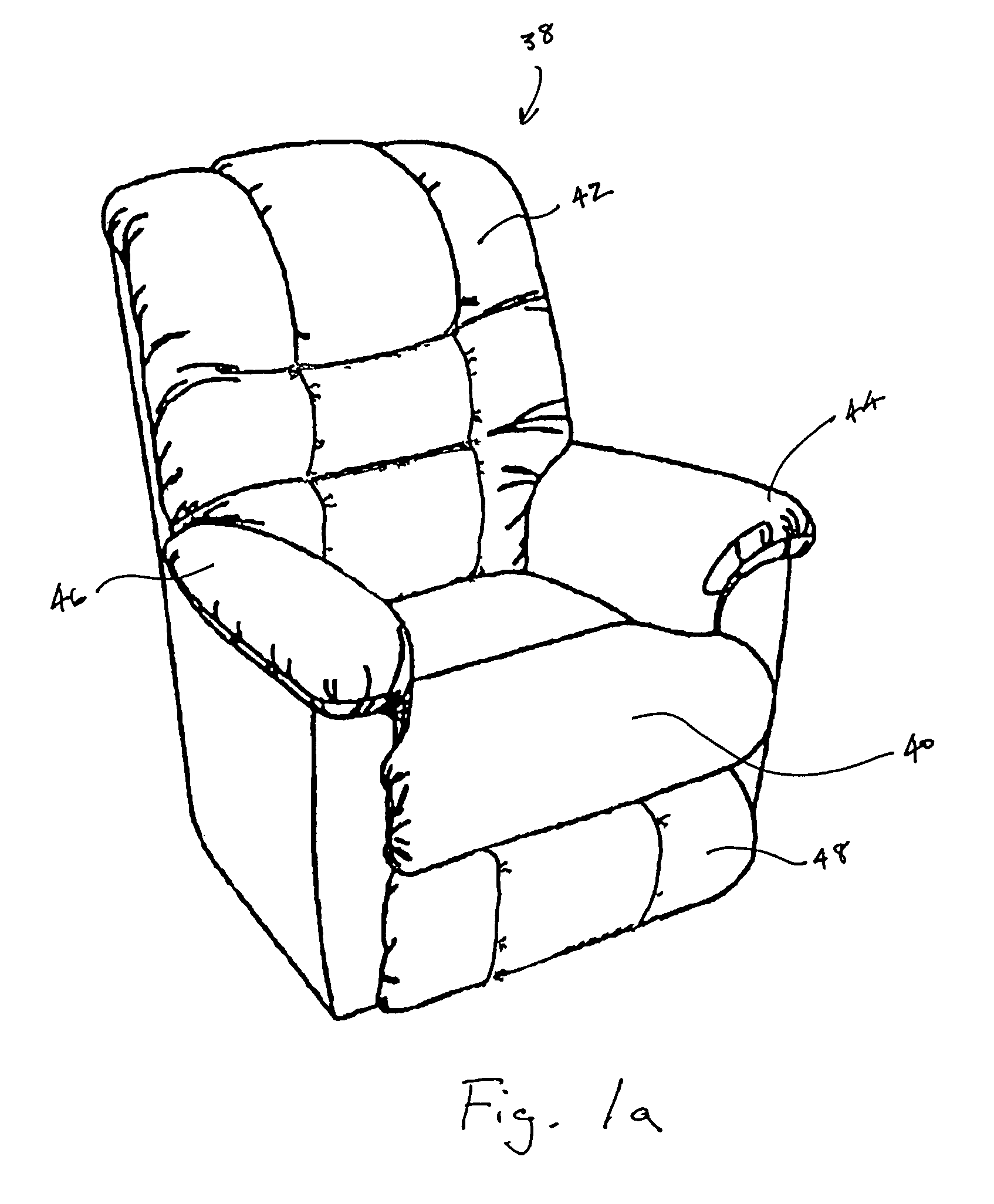Zero clearance recliner mechanism
a recliner and zero clearance technology, applied in the field of reclining chair mechanisms, can solve the problems of excessive user effort to operate the chair, the length between the front and rear swing links cannot be too great, and the user sitting in the chair is usually forced to work against, so as to achieve less rear clearance, easy operation, and low cost
- Summary
- Abstract
- Description
- Claims
- Application Information
AI Technical Summary
Benefits of technology
Problems solved by technology
Method used
Image
Examples
Embodiment Construction
[0036]As depicted in FIGS. 1 and 1a, zero-clearance recliner chair 38 generally includes seat 40, backrest 42, arms 44, 46, and ottoman 48, all operably coupled with mechanism 50. Mechanism 50 generally includes a pair of linkages 52, 54, seat box 56, cross-bracing 58, and crankshaft 60. Linkages 52, 54, are mirror images of each other and have identical structure and function. As a result, the description provided herein below for linkage 52 should be assumed to apply also to linkage 54.
[0037]Linkage 52 generally includes ground-engaging base link 62, front swing link 64, rear swing link 66, seat link 68, lower coordinating linkage 70, ottoman linkage 72, upper coordinating linkage 74, drive linkage 76, and backrest linkage 78. Rear swing link 66 is pivotally connected to base link 62 at pivot 80 and to bell crank 82 of lower coordinating linkage 70 at pivot 84. Front swing link 64 is pivotally connected to upper link 86 of upper coordinating linkage 74 at pivot 88. Front swing lin...
PUM
 Login to View More
Login to View More Abstract
Description
Claims
Application Information
 Login to View More
Login to View More - R&D
- Intellectual Property
- Life Sciences
- Materials
- Tech Scout
- Unparalleled Data Quality
- Higher Quality Content
- 60% Fewer Hallucinations
Browse by: Latest US Patents, China's latest patents, Technical Efficacy Thesaurus, Application Domain, Technology Topic, Popular Technical Reports.
© 2025 PatSnap. All rights reserved.Legal|Privacy policy|Modern Slavery Act Transparency Statement|Sitemap|About US| Contact US: help@patsnap.com



